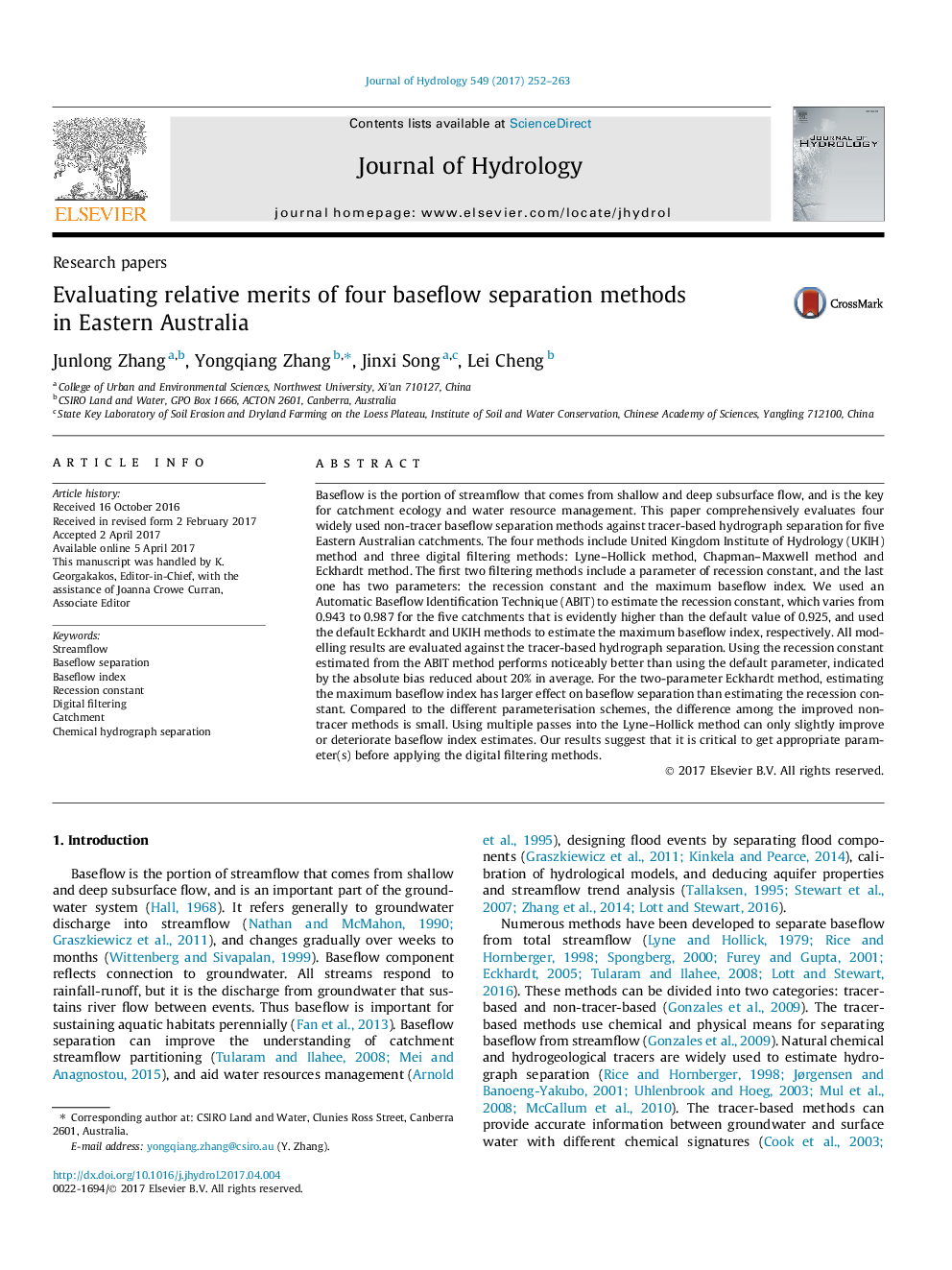| Article ID | Journal | Published Year | Pages | File Type |
|---|---|---|---|---|
| 5770981 | Journal of Hydrology | 2017 | 12 Pages |
Abstract
Baseflow is the portion of streamflow that comes from shallow and deep subsurface flow, and is the key for catchment ecology and water resource management. This paper comprehensively evaluates four widely used non-tracer baseflow separation methods against tracer-based hydrograph separation for five Eastern Australian catchments. The four methods include United Kingdom Institute of Hydrology (UKIH) method and three digital filtering methods: Lyne-Hollick method, Chapman-Maxwell method and Eckhardt method. The first two filtering methods include a parameter of recession constant, and the last one has two parameters: the recession constant and the maximum baseflow index. We used an Automatic Baseflow Identification Technique (ABIT) to estimate the recession constant, which varies from 0.943 to 0.987 for the five catchments that is evidently higher than the default value of 0.925, and used the default Eckhardt and UKIH methods to estimate the maximum baseflow index, respectively. All modelling results are evaluated against the tracer-based hydrograph separation. Using the recession constant estimated from the ABIT method performs noticeably better than using the default parameter, indicated by the absolute bias reduced about 20% in average. For the two-parameter Eckhardt method, estimating the maximum baseflow index has larger effect on baseflow separation than estimating the recession constant. Compared to the different parameterisation schemes, the difference among the improved non-tracer methods is small. Using multiple passes into the Lyne-Hollick method can only slightly improve or deteriorate baseflow index estimates. Our results suggest that it is critical to get appropriate parameter(s) before applying the digital filtering methods.
Related Topics
Physical Sciences and Engineering
Earth and Planetary Sciences
Earth-Surface Processes
Authors
Junlong Zhang, Yongqiang Zhang, Jinxi Song, Lei Cheng,
